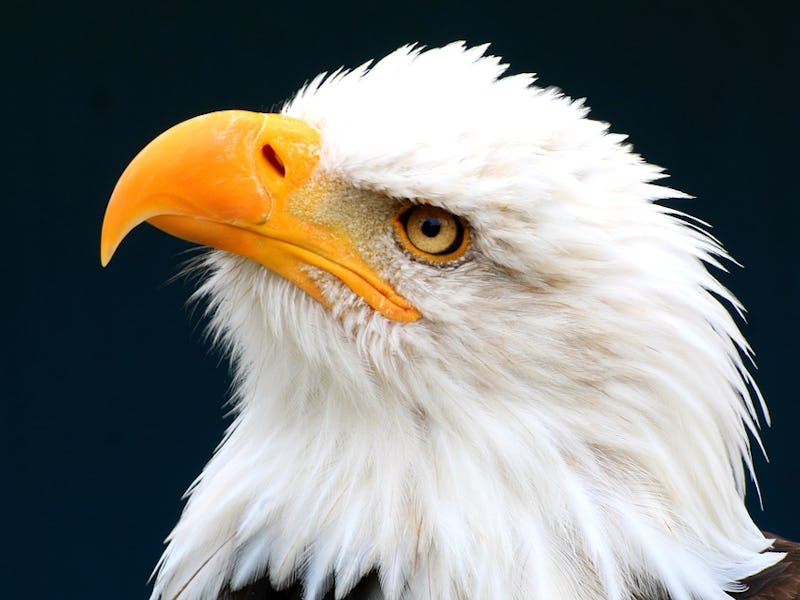A Plan to Protect Bald Eagles From Decimation Has Been a Rousing Success
Protect those little bald babies.

The bald eagle, the national symbol of the United States, is no longer on the federal list of threatened species, but the species is still on a rebuilding effort after watching its once fierce numbers plummet to the edge of extinction forty years ago. Conservationists kicked off a nest-protection program in 1991 at the Voyageurs National Park in Northern Minnesota in an effort to push along and protect the reproduction of these big birds.
Over two-and-a-half decades later, it’s being hailed as an unqualified success. On Tuesday, scientists from the University of Wisconsin-Madison, the National Park Service, and the U.S. Geological Survey announced in the Journal of Applied Ecology that bald eagle populations at Voyageurs have been tremendously rehabilitated to stable numbers thanks to nest protection. Collected data in reveals that the breeding population of these birds has risen from 10 pairs in 1991 to 48 pairs in 2016.
A young eagle in Voyageurs National Park.
The scientists believe nest protection led to a direct increase of breeding pairs by 37 percent, with other factors that affected the stability of bald eagles accounting for the rest. Park rangers began to use warning signs to keep people away from nests in 1991, a process that eventually helped sequester nine eagle nests away from human contact a year.
Another major change that has protected bald eagles in the United States was the 1970 federal ban of DDT, a pesticide that entered U.S. waterways at enormous quantities and became absorbed in aquatic plants and fish. Bald eagles would then eat the fish, and DDT would cause their own eggshells to be so thin that they would break or fail to hatch.
The study focused on bald eagles in Voyageurs National Park.
Ben Zuckerberg, an associate professor of wildlife ecology at UW-Madison and a coauthor of the new study, explained in a statement that while it seems logical protecting the nests of an endangered species will help rehabilitate populations, proving that this move would without a doubt increase breeding pairs was a difficult process. Analysis of long-term monitoring data, which incorporated the number of individual nests and the overall population of the birds, revealed to Zuckerberg and his team that there had been annual increases of eight percent in nesting success and the average number of young per nest had risen by 14 percent over 25 years.
“Nest protection is widely used for other raptors, including many hawks and falcons, to quarantine them from human disturbance, even from activities that we don’t think would be all that disturbing, like camping, hiking or boating,” explains co-author Jennyffer Cruz, Ph.D., a UW-Madison researcher, in a statement. “But nobody has come along and asked, does protecting individual nests have a broader effect on the population?
“We know that habitat preservation is not always enough. When we talk about protecting areas, it’s important to think about managing the species as well.”
By managing the species, we can continue to enjoy these beautiful dinosaurs of new. Now humans have to step up and protect the national parks that are their home.
If you still need some inspiration, here’s a tune that will help: